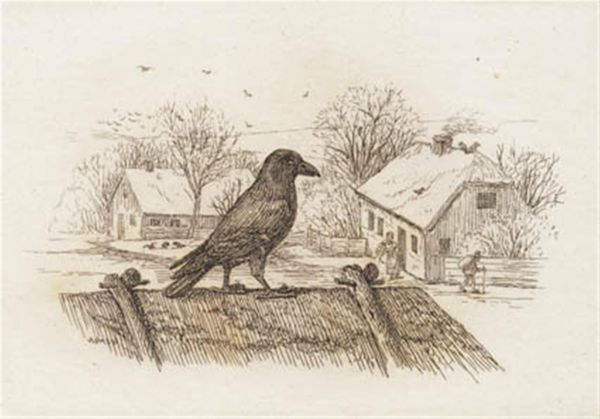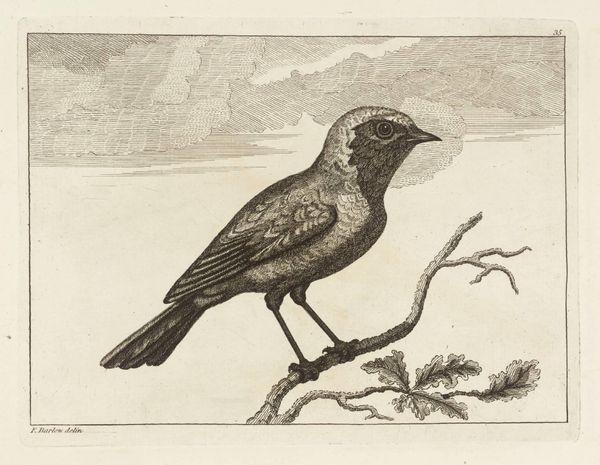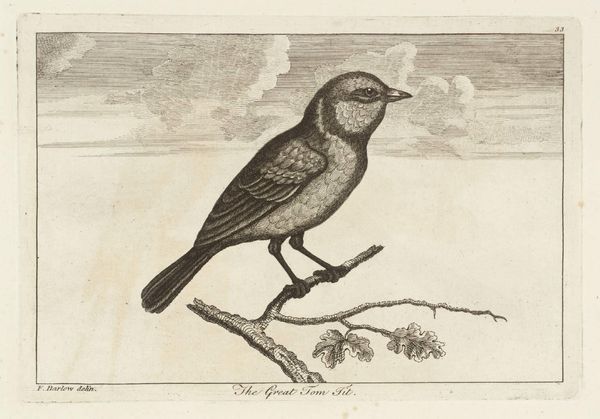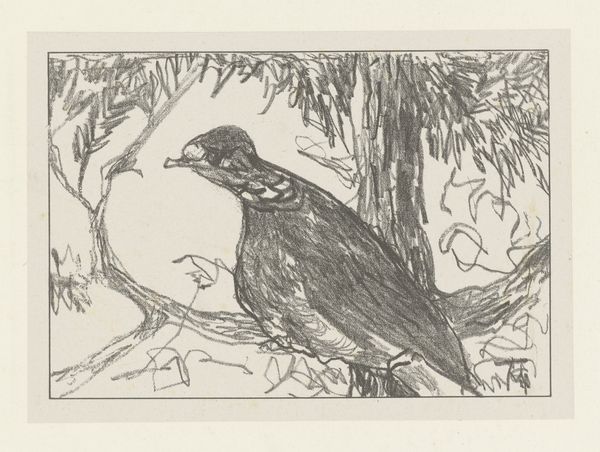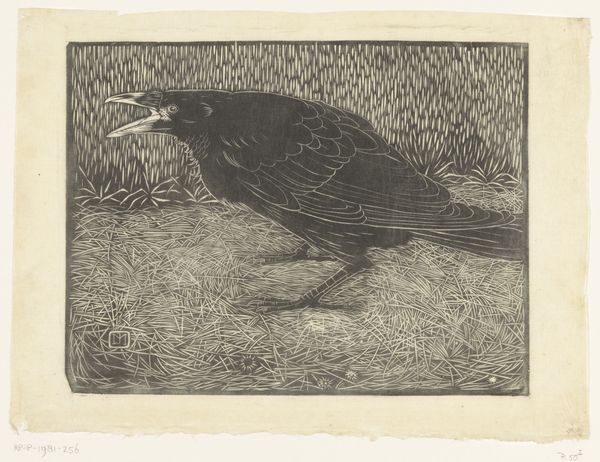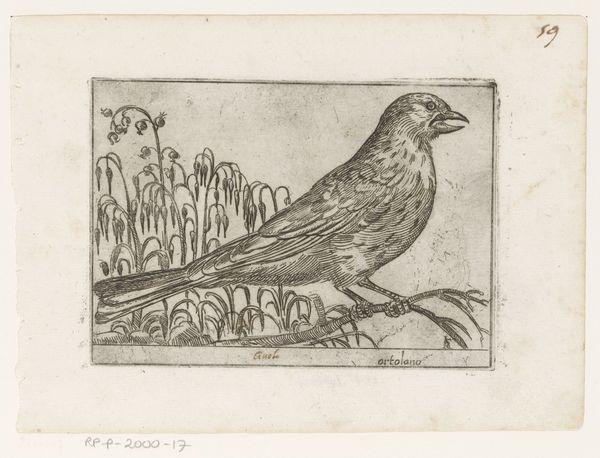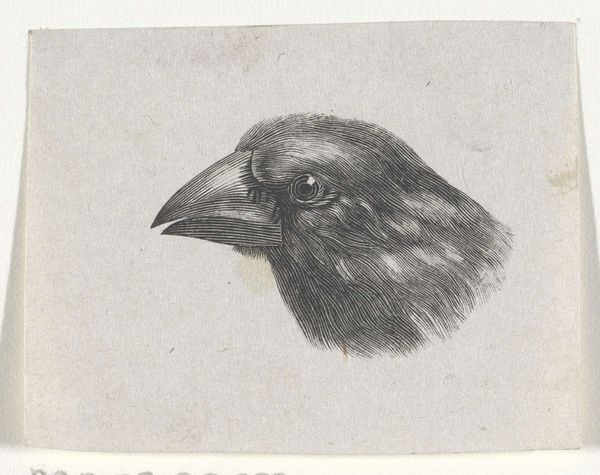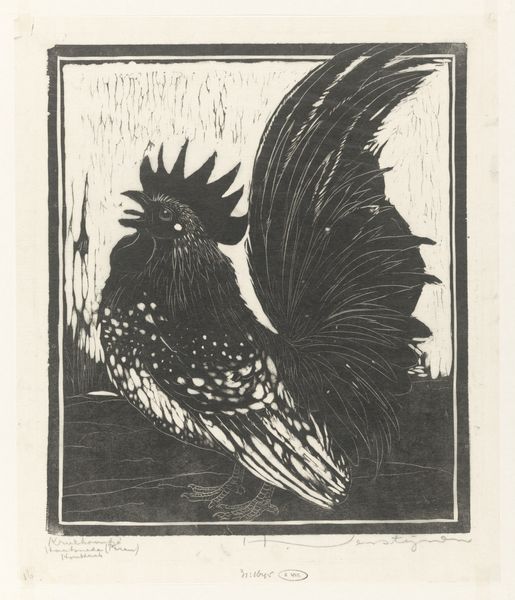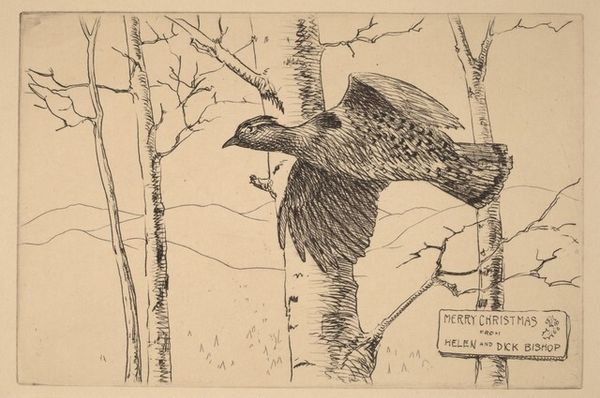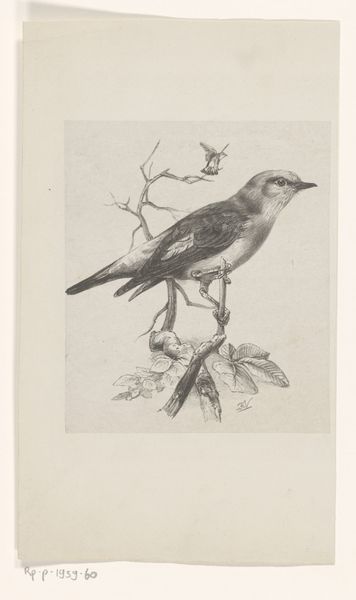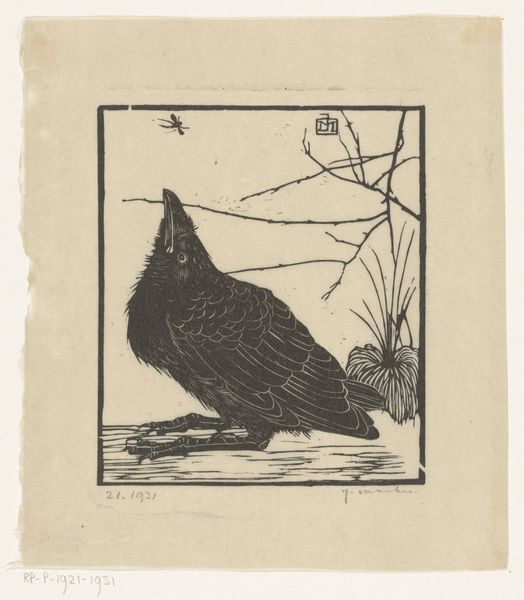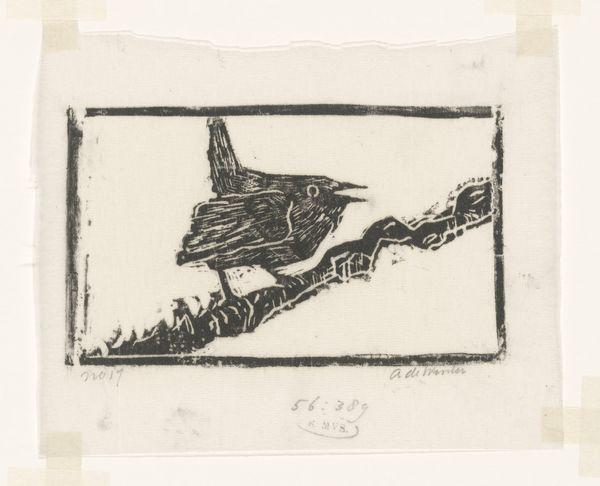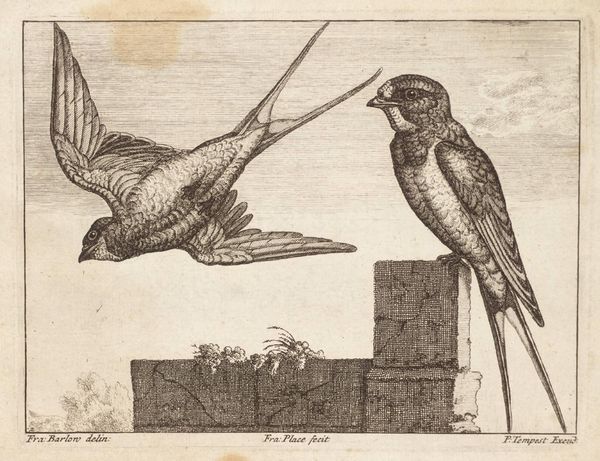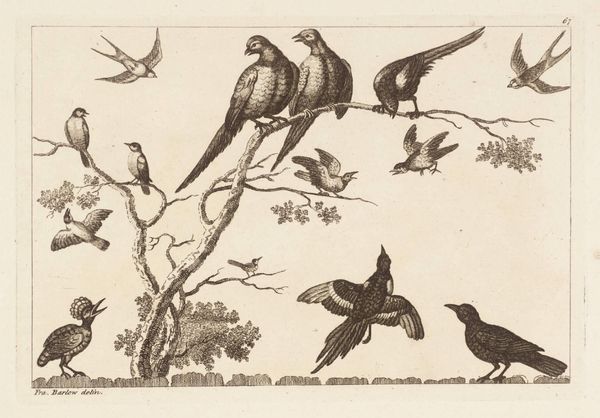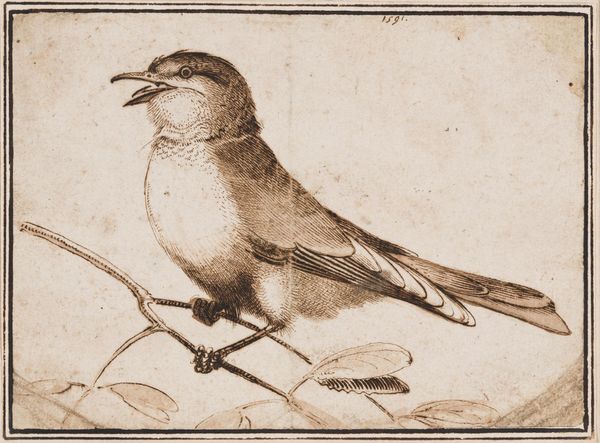
Illustration til "Halvhundrede Fabler for Børn" af Hey 1834
0:00
0:00
drawing, print, ink, engraving
#
drawing
#
narrative-art
# print
#
landscape
#
ink
#
line
#
genre-painting
#
engraving
Dimensions: 110 mm (height) x 133 mm (width) (bladmaal)
Curator: The weight of the world is visible in that stoop! Editor: Indeed! Today we’re examining Martinus Rørbye's illustration, an engraving in ink on paper created around 1834, designed for an edition of "Fifty Fables for Children." It resides here at the SMK, the National Gallery of Denmark. Curator: I’m immediately drawn to the sheer size disparity. The crow dominates, overseeing a miniature, quaint rural scene with cottages, a well-trod road, and tiny human figures going about their daily lives. It evokes an uneven power dynamic. Editor: Certainly. Rørbye’s interest in genre painting emerges through the detailed depiction of this village life. The landscape is rendered with incredible specificity, while the colossal crow feels symbolic. We have to consider the function of fable in Danish culture. Children's tales and popular narratives like these were meant to convey morality in palatable formats and influence the social imagination, encouraging or discouraging certain behaviours. Curator: Absolutely. Thinking about gender roles, too – there’s a woman framed in the doorway of one cottage, while a bent-over figure carrying a load on their back shuffles away, deeper into the rural space. Their lives are circumscribed by labour. And this raven looms over them like... capitalism? Societal expectation? Some unavoidable, unknowable fate? Editor: Your interpretation invites consideration of the work's implicit commentary on societal structures! This particular fable's moral teaching or the specific anecdote Rørbye illustrated might not necessarily reinforce or challenge norms, or provide a lens through which these unequal situations and hierarchies can be subverted. Curator: It also seems Rørbye, like many artists of his era, engages with landscape as a site of constructed national identity, juxtaposing an ideal with stark, visible limitations – in this case, the imposing, critical eye of nature in the form of an ominous bird. Editor: Exactly. The image oscillates between documenting a quotidian scene and functioning as a space for projecting contemporary anxieties. Its value isn't simply aesthetic. Curator: Ultimately, Rørbye’s drawing captures both the perceived idyllic simplicity of 19th-century Danish village life and a quiet unease lurking beneath the surface. It leaves one wondering who precisely these stories serve, who this benefits and whether they are really for children? Editor: Yes, it speaks volumes about how social commentary embeds itself within ostensibly simple, visually accessible images—and how these influence larger historical discourses.
Comments
No comments
Be the first to comment and join the conversation on the ultimate creative platform.
